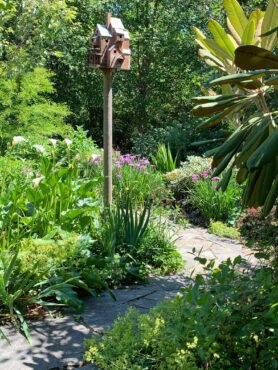
“Why would you want to buy that piece of swampland?” asked the strawberry farmer when Jim and Lynn McIntyre showed interest in a plot of land he had tried to cultivate.
The land was full of rocks and wet clay, and a big section consisted of a 3-inch-deep peat-like layer. Full of scotch broom, with trees only along the edges, the property had its share of challenges. The McIntyres were not deterred, however, and brought their imaginations and many talents to building a beautiful home and garden.
Jim McIntyre is a contractor and had built a spec house in the neighborhood that the family was able to occupy while building their home just down the lane. The neighborhood is a hidden gem these days, with several homes sharing common areas that include a wonderful pond and creek. Waterfowl, owls, woodpeckers, eagles and many other wildlife live in the green space, lovingly protected by the neighbors.
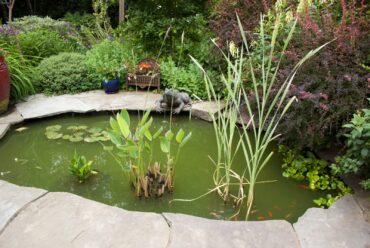
Once the home was completed, the focus shifted to the creation of a garden. McIntyre started building paths made of bluestone pavers. He created several stone patios: first just outside the two sets of glass doors, and more recently, a large seating area and fish pond built close to the neighborhood pond. It is a wonderful destination in the garden in full sun, where the family and friends can enjoy meals, watch the wildlife and listen to the sound of the bronze frog fountain.
Some drainage work was done to direct water to the wetlands adjacent to the property, and the only sign of some of the wetter areas these days are a giant Gunnera manicata and a bald cypress.
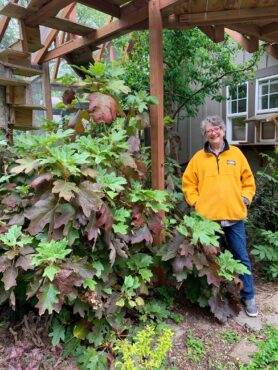
When she first started the garden, Lynn McIntyre hired a designer to help her, but the Mediterranean flavor of the design did not suit Lynn’s vision and the soil conditions, so she started over.
She had brought along 300 pots from her previous home, and these plants were the foundation of the new landscape. There was a foot-tall Weigela that Lynn’s father had started from a cutting and a tiny oakleaf hydrangea, both kept small for years by the browsing deer. Both shrubs have grown huge within their current fenced sanctuary — the oakleaf hydrangea doubly protected inside the cat’s enclosure.
There were five or six rare rhododendrons from Chimacum Woods nursery, like the Rex rhododendron that initially sported only two leaves, which have matured and now bloom reliably. Many of the large-leaved rhododendrons take eight to 10 years to bloom, and seeing them reach this stage is an occasion to celebrate.
Many of Lynn McIntyre’s roses are a source of pride as well, having successfully rooted from cuttings.
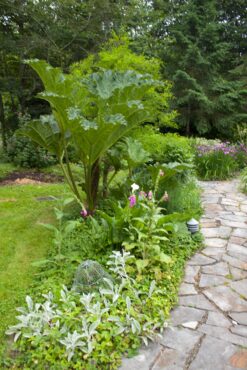
She is a Master Gardener and has a wonderful green thumb. Many of her plants have come from the Master Gardeners’ annual plant sales, as well as from friends’ gardens and local nurseries.
The borders are bursting with color and texture, curvy lines, the sounds of water flowing and birds singing. Jim keeps the birdfeeders full and a vast variety of birds well-fed. The plants Lynn chooses are those she falls in love with. Hers is a plant collector’s garden filled with many treasures.
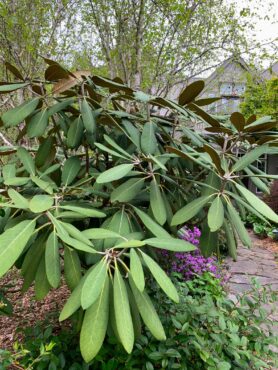
Lynn calls her garden a “pod garden.” She created it in stages, or pods: first starting right outside the front of the house and outward and second, along the southern side of the house. After about five years, she was able to develop a fenced area in the back.
She took a garden design class, and when she shared her pod system of developing individual areas separately with the class, the instructor did not believe a cohesive garden could be created using such an approach. His opinion was quickly changed once he saw some pictures.
The garden is beautiful and spirited. Its cohesion is created through the use of uniform pathway materials, Jim McIntyre’s fanciful birdhouses, water features, colorful seating areas, great placement of big and colorful pots, and an exciting plant selection. The garden is exuberant any time of the year, and even the quieter, shady areas offer up plenty of surprises.
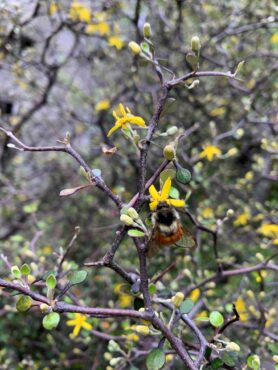
There are groves of white Himalayan birches, a variety of ferns, bulbs and even some lady slipper orchids. The couple are still developing new areas and re-imagining old ones.
When recent snows knocked down 15-year-old Ceanothus shrubs, Lynn decided she was ready for a change instead of crying over the broken, old plants. The removal of the shrubs allowed more sun to reach the bed, and now it is filled with colorful new plantings.
Much of the garden is open to visiting deer, yet they do not seem to do too much damage. Lynn does protect some of the more susceptible plants as needed with quaint cages, and a large portion of the rear garden is fenced in.
This section of the garden was developed last. The septic field takes up a large portion of the space, and Lynn worried that nothing would grow in the sand that had been brought in for the purpose.
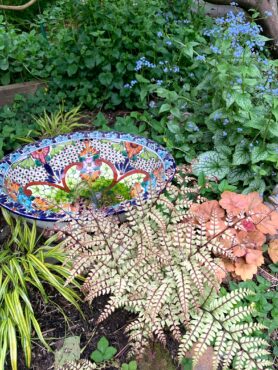
Fortunately, the plants do not mind, and the garden is a joyful mix of romantic, colorful perennials and shrubs like roses, Himalayan honeysuckle, panicle hydrangea, peonies, gorgeous delphiniums, a robust clump of red lobelia (Lobelia tupa), purple hibiscus and an Azara that was kept in a pot for years and is finally free to grow. A purple bench offers a spot to rest, as well as a nice focal point amid the bright, golden creeping Jenny and Ajuga reptans.
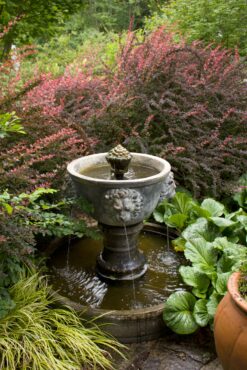
The fenced garden is also home to a productive vegetable garden. The McIntyres’ daughter, Anne, loves permaculture, and has been in charge of improving and enlarging the edible garden. She also loves to sprinkle edible seed anywhere she can find an open spot in the garden, and parsnips, onions and peas are always sharing space with ornamentals throughout.
The grass in the fenced area is quickly being replaced with shredded wood layered over cardboard to form new paths, and new planting beds created by smothering grass with cardboard topped with a sand and compost garden mix. There is nothing more exciting than new, empty garden beds, ready to receive new plants.
Gardeners are truly fortunate, especially during these challenging times. Their gardens provide a safe, creative haven where they can get their exercise, grow good food, create beauty, share opportunities to work alongside their loved ones, provide sustaining habitat, recharge and bring happiness to friends through the sharing of plants and time spent just enjoying it all. Lynn and Jim McIntyre have, indeed, created such a place.




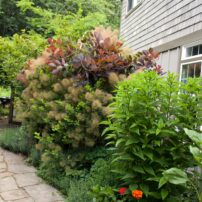
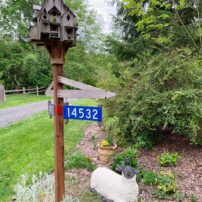
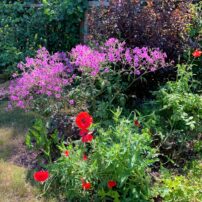
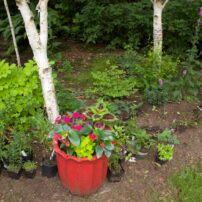
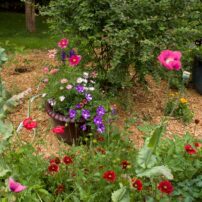
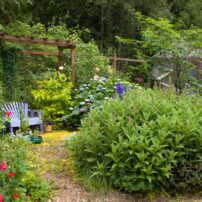
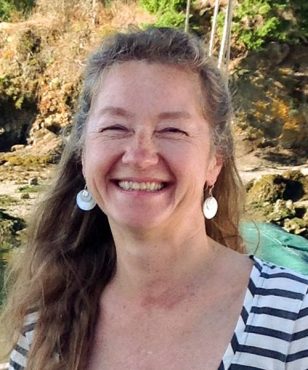























Comments